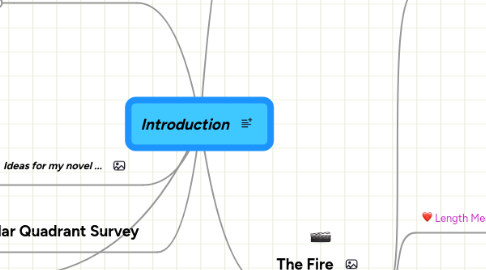
1. Assize of Measures
1.1. It was not until the reign of Richard the Lionheart that the standardisation of units of measurement was first documented. In the Assize of Measures in 1196 it was stated that "Throughout the realm there shall be the same yard of the same size and it should be of iron". The Magna Carta (1215) also attempted to standardise measurements throughout the kingdom, although it concentrated on measures of wine and beer!
2. Ideas for my novel ...
3. The Polar Quadrant Survey
4. New node
5. Body Parts
5.1. Initially this new system was rejected by the French people and it only became rigorously enforced from 1837 onwards: by 1870 it was being widely used in continental Europe.
5.2. One of the oldest units of length measurement used in the ancient world was the 'cubit' which was the length of the arm from the tip of the finger to the elbow. This could then be subdivided into shorter units like the foot, hand (which at 4 inches is still used today for expressing the height of horses) or finger, or added together to make longer units like the stride. The cubit could vary considerably due to the different sizes of people.
5.3. As early as the middle of the tenth century it is believed that the Saxon king Edgar kept a "yardstick" at Winchester as the official standard of measurement. A traditional tale tells the story of Henry I (1100-1135) who decreed that the yard should be "the distance from the tip of the King's nose to the end of his outstretched thumb".
6. The Fire
6.1. Today length measurement is used in every sphere of life to enable fair trading conditions and to develop new and improved products and processes that enhance our standard of living.
6.2. Length Measurement Today
6.2.1. "It is remembered that the Iron Ulna of our Lord the King contains three feet and no more; and the foot must contain twelve inches, measured by the correct measure of this kind of ulna; that is to say, one thirty-sixth part [of] the said ulna makes one inch, neither more nor less... It is ordained that three grains of barley, dry and round make an inch, twelve inches make a foot; three feet make an ulna; five and a half ulna makes a perch (rod); and forty perches in length and four perches in breadth make an acre."
6.2.2. The perch or rod, as it was also known, was a traditional Saxon land measure and survives in twentieth century. It had originally been defined as the total length of the left feet of the first sixteen men to leave church on Sunday morning.
6.2.3. It is thought that Henry VII (1485-1509) went back 350 years to obtain his standard, and it is likely that it may have been a direct copy of the old standard of Edgar, 'the yardstick', one of the earliest Anglo-Saxon standards.
6.2.4. In fact this yard had a very short official life (9 years and 198 days) as in 1834 it was damaged in a fire that burned down both Houses of Parliament. A new standard was eventually legalised in 1855 and was based on unofficial standards that had been compared to the Imperial Yard before it was damaged.
6.2.5. The new yard became the first imperial standard and was actually a standard that had been commissioned by the Royal Society in 1742, which in turn had been based on an earlier Elizabethan standard.
6.3. Lasers
6.4. Krypton
6.4.1. Online Help
6.4.2. Use Cases & Templates
6.4.2.1. Personal Todo List
6.4.2.2. Vacation Planning
6.4.2.3. Meeting Minutes
6.4.2.4. Project Plan
6.4.2.5. more...
6.4.3. Tools and Gadgets
6.4.3.1. Offline Mode
6.4.3.2. Geistesblitz Tools
6.4.3.3. Email & SMS Gateways
6.4.3.4. Compare Editions
